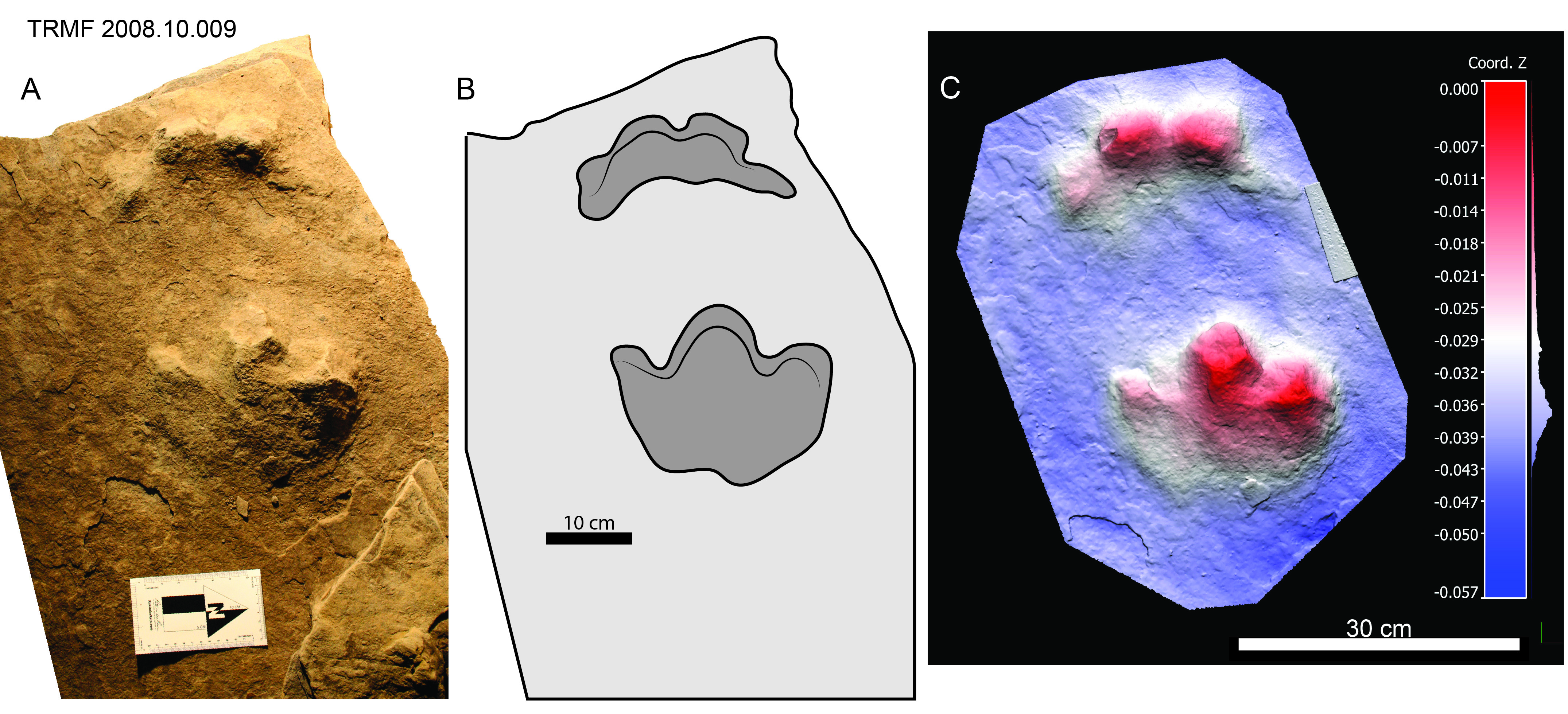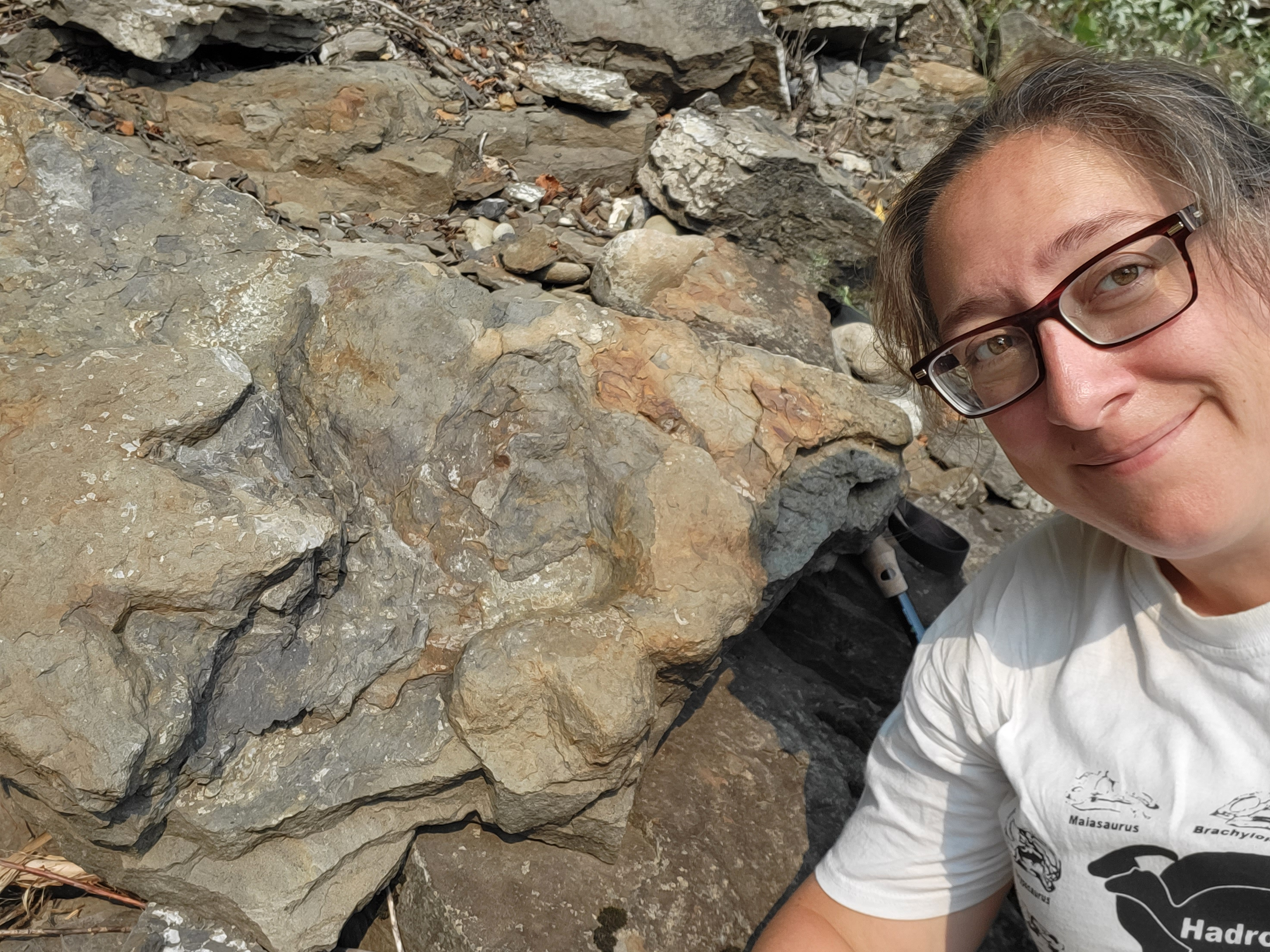Several footprints found in western Canada must have come from ankylosaurid ankylosaurs, paleontologists have concluded, making them the first of their kind discovered. Although other ankylosaur tracks have been found, these represent the first footprints from the most charismatic part of the family, whose thick armor and lethal sledgehammer-like tail club have made them among the most famous dinosaurs.
Ankylosaurs were built tough, with mighty armor to fend off the fearsome predators of the day. However, they diverged into two groups: nodosaurid ankylosaurs with four toes per back foot, and ankylosaurid ankylosaurs with three. More importantly to most people, it was only the tautologically named ankylosaurid ankylosaurs that had the mighty club tail they are thought to have welded like a medieval mace. Their nodosaurid cousins made do with a flexible tail, which seems a lot less useful for breaking tyrannosauroid shins.
Until now, all the ankylosaur footprints found across North America have had four toes on their rear feet. Paleontologists couldn’t match these to a specific species known from its bones, so they created what is known as an ichnospecies, a species known only from footprints, which they called Tetrapodosaurus borealis.

The first three-toed footprints of Ruopodosaurus from Tumbler Ridge, British Columbia.
Image credit: Credit V. Arbour/C. Helm.
A single footprint can get distorted, and a toe print be erased. However, numerous prints have been found around Tumbler Ridge, British Columbia, and across the Alberta border, some of which have been studied in detail, with casts made. The three-toed pattern for the back feet is clear in most cases. Prints from the front feet have five toes, but this would be true of either type of ankylosaur.
Once again, we can’t know the exact species responsible, but scientists studying these prints are confident it was an ankylosaurid and the ichnospecies has been named Ruopodosaurus clava.
The tracks were made in what is thought to have been a delta environment composed of a mix of shallow lakes and heavily vegetated lowlands threaded by channels.
Naturally, no one thought the ankylosaurids, which weighed 2-3 tonnes, were walking around too softly to leave a trace. However, the age of the prints, at 94-100 million years old, is revealing, since no ankylosaurid bones have been found anywhere in North America between 100 million and 84 million years ago. This absence has been called the “ankylosaurid hiatus”. Clearly, suspicions of the ankylosaurids’ continental demise were exaggerated, if not completely wrong. The find proves the continent and even the Peace River area of the Rocky Mountains were able to support nodosaurids and ankylosaurids simultaneously, without one displacing the other.
“While we don’t know exactly what the dinosaur that made Ruopodosaurus footprints looked like, we know that it would have been about 5-6 metres long, spiky and armoured, and with a stiff tail or a full tail club,” said Dr Victoria Arbour of the Royal BC Museum in a statement.

Royal BC Museum curator of palaeontology Dr Victoria Arbour with the Ruopodosaurus holotype in the field at Wolverine River, Alberta in August 2023.
Image credit: Royal BC Museum
The findings raise the possibility that some other three-toed footprints, that have previously been allocated to very different dinosaurs, might also be from ankylosaurids.
The name means “tumbled-down lizard with a club”, referring to the famous tail and the steep mountains around the sites where the tracks were found.
“Ever since two young boys discovered an ankylosaur trackway close to Tumbler Ridge in the year 2000, ankylosaurs and Tumbler Ridge have been synonymous. It is really exciting to now know through this research that there are two types of ankylosaurs that called this region home, and that Ruopodosaurus has only been identified in this part of Canada,” said Dr Charles Helm of the Tumbler Ridge Museum
The study is published in the Journal of Vertebrate Paleontology
Source Link: First Three-Toed Ankylosaur Footprints Prove They Were In North America 100 Million Years Ago